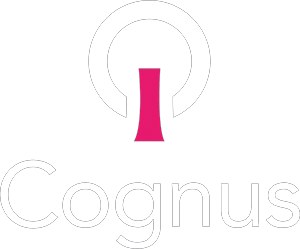Expressive language skills (i.e. use of language) includes using verbal (talking) and/or Augmentative and Alternative Communication (such as symbols, pictures, gestures or signs) to get a message across to someone else.
It includes:
- Learning and using new words, including nouns, verbs and concepts
- Saying or showing what you want, need, think and feel using words, facial expressions, signs or pictures
- Putting words together into sentences
- Making long and accurate sentences using the right words and grammar
- Answering questions
Speech refers to how we say sounds and words.
This includes:
- Articulation – producing accurate speech sounds using precise mouth movements
- Phonology – understanding and developing accurate sound systems and rules for speech sound combinations
- Voice – pitch, volume, voice quality
- Fluency
Learning to speak clearly involves:
- Being able to hear and identify different speech sounds
- Being able to produce specific sounds
- Being able to sequence sounds and syllables within words
Young children go through a typical process of developing and mastering speech sounds, but there is natural variation in how long this development may take.
Children may still be making some very minor speech errors until the age of 7 years old. This may include saying ‘wed’ for red, ‘fum’ for thumb, or reducing complex consonant blends e.g. ‘staw’ for straw.
Further information about what to expect at different stages can be found on the websites at the bottom of this page.
What can you do in the classroom to support expressive language skills?
- Use multi-modal teaching to reinforce words (such as pictures, photos, written word)
- Highlight key vocabulary across all subject areas, and ensure lots of repetition of key words
- Model and teach word-learning strategies, and encourage children to ask about meanings of words that they aren’t familiar with
- Give time for the child to formulate ideas and respond to questions
- Model back correct sentence structure and grammar
- Gradually build on the child’s current language level e.g. if using very short phrases, model back the phrase with one or two added words
- Use visual support to help a child structure sentences or narrative e.g. story boards
- When teaching words, talk about both the word meaning and sound (phonological) structure of the word
What can you do in the classroom to support speech?
- Avoid correcting speech errors during conversation etc., but instead model back a word correctly
- For a child with unclear speech, encourage using other ways to communicate alongside speech, such as gestures or signs, pointing to something, drawing etc.
- If children have very unclear speech or persistent speech errors, seek specific advice from a Speech and Language Therapist. Further information can be found in the resource: Information and advice for supporting children with unclear speech
Links to resources and activities*:
Language:
- Vocabulary activities – to support learning new words
- Vocabulary examples – inside the house
- Vocabulary examples – outside the House
- Vocabulary examples – pets
- Word Web – to help with learning new words
- Making simple sentences – support to make sentences that include subject-verb-object, e.g., “Boy eating a burger”.
- Narrative skills – to support children to describe what is happening or what has happened in the right order, e.g., storytelling, sharing news
- Universal strategies to support children and young people with Developmental Language Disorder (DLD)
Speech:
- Information and advice for supporting children with unclear speech
- Phonological (speech sound) awareness pack – practical ideas and some resources
- Input modelling handout – ideas for how to produce specific sounds
- Helping children use target sounds in their talking – how to gradually help children move from saying a sound on its own to using it in their everyday talking
Fluency:
- Supporting pupils who stammer in the classroom – general advice and strategies
- Cognus’ top tips for parents of children with DLD (Developmental Language Disorder) https://www.youtube.com/watch?v=2rIn32RI0FI
- Speech and Language UK (previously ICAN) – Support for parents and professionals, including what to typically expect at different ages and stages
- org – To understand more about Developmental Language Disorder (DLD)
- widgit.com – Lots of resources available through the symbol resources tab, including some free resources for language and vocabulary
- http://www.wordsforlife.org.uk/ – Words for life (part of the National Literacy Trust)
- thinkingtalking.co.uk – Information about Word Aware – a whole school vocabulary approach – and other programmes
- afasic.org.uk – For support and information for families
- NAPLIC – A national organisation of teachers, speech and language therapists and other professionals involved in supporting children with speech language and communication needs (SLCN)
- mommyspeechtherapy.com – Speech sound worksheets, sound development chart and an articulation (speech sound) screener
- https://www.twinkl.co.uk (inclusion – speech and language) – A range of resources for supporting pupils with speech and language needs
- speechandlanguage.info/parents – Advice and information for what to expect at different ages and stages, along with some activities and interactive games for developing speech and language skills
- For advice and information about stammering:
- https://stamma.org/ – website of the British Stammering Association, with lots of information and advice for parents, school staff, and people who stammer
- https://michaelpalincentreforstammering.org/ – includes specific sections with information and help for children, young people, parents, adults and teachers
*These are universal strategies to help children and young people with these common functional concerns. Should you require more specific support please seek appropriate professional advice.
For more information about local services please contact: cognus.therapies@cognus.org.uk
